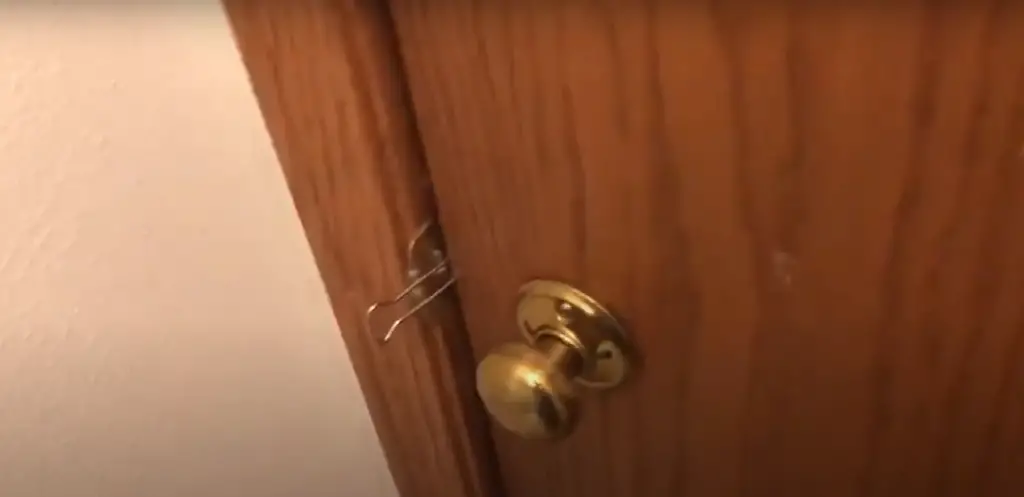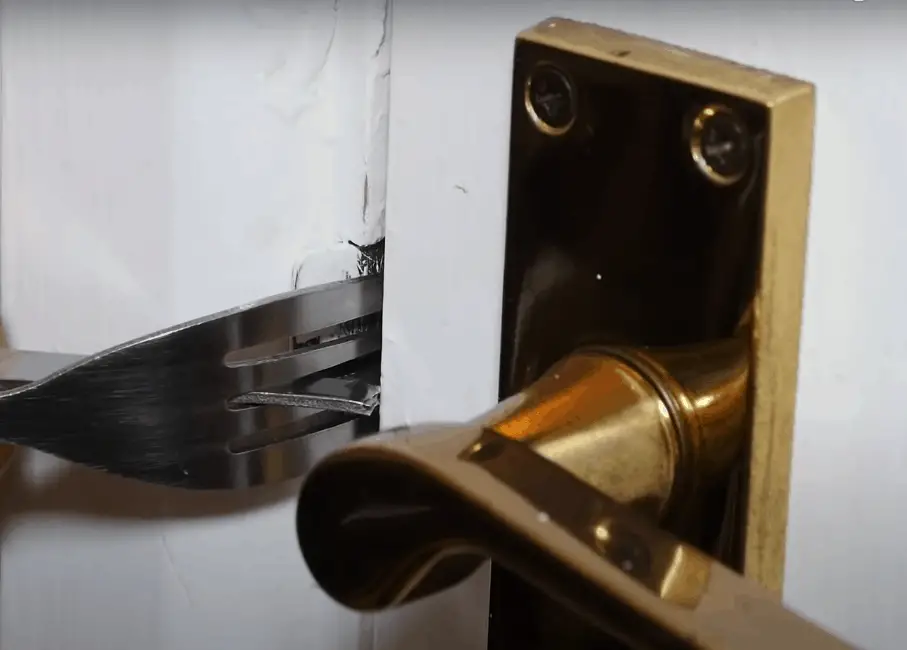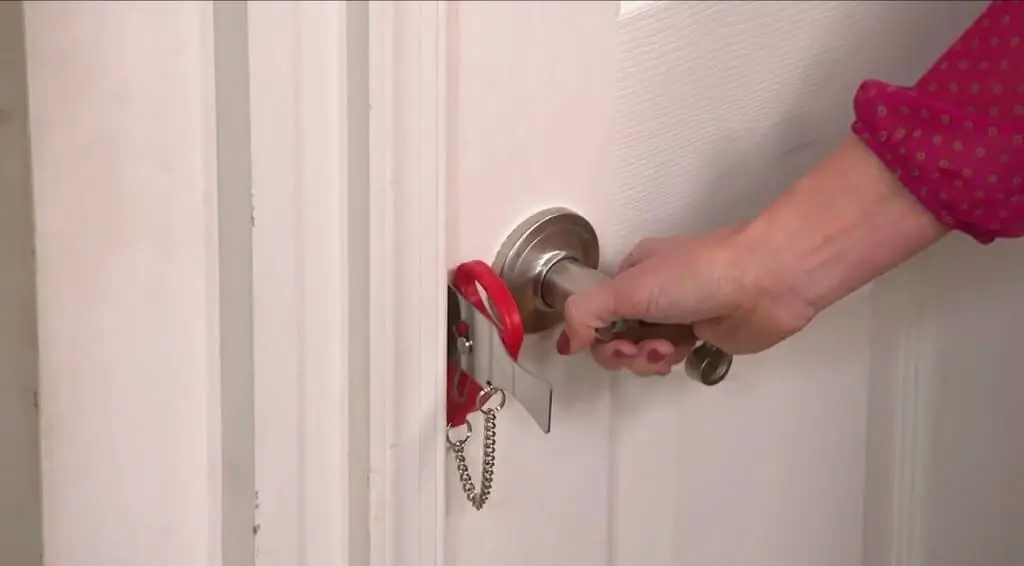Here’s how to lock a door without a lock, using items you likely have in your home.
These are the most practical options for locking a door without a lock.
- Use a binder clip
- Put a chair under the door handle
- Use a fork
- Use a belt and hook
- Secure the door with portable locks
If you’re in a rush and run into an issue with your lock, or you don’t have a lock, these simple tricks can be used to lock any door without one.
You can use items you already have in your house or buy portable door-locking devices.
Easy and Practical Ways to Lock a Door without a Lock
1. Lock the door using a binder clip
Who would have imagined that a thing that firmly secures documents, such as a binder clip, could also be used as an alternative door lock? Yes, a binder clip may function as an emergency door lock.

Binders exist in various sizes, but I believe a larger one is best to use. Here are the DIY steps to convert a binder clip into a door lock:
- You take the binder clip and take out the base from its holder. Set aside the clip’s base because you won’t need it this time.
- To make a lock, you will need the holder, the firm and thin metal you used to grip open the metal clip. In addition, you need one of the two.
- Now, you need a vice grip or a plier to bend the two pointed portions of the clip handle about 1cm to look like a hook.
- To attach it to your door, gently open it to let the material you made fit into the striking plate.
- Once inserted, smoothly pull the door in so the deadbolt touches the strike plate.
- And the door is now nicely shut.
- Just remove the material from the strike plate and swing the door open to reopen it.
2. Lock the door by putting a chair under the door handle/doorknob
For Handle Type: A chair with adjustments, such as an office chair, is ideal since you can easily adjust the height of the back support and roll it under the door handle. When someone attempts to come in, they cannot press the handle down.
For Knob Type: You may also try this trick with wooden seats. Using a similar procedure, place the chair at an angle beneath the doorknob. Push the chair as far as possible to ensure it is securely in place. Wedge the chair firmly into position. You can lie anything on the legs of the chair to add force when someone attempts to push the door.
3. Repurpose a rubber doorstop as a door lock
Doorstops’ are not only helpful in keeping a door open to prevent it from slamming shut in the wind. You can creatively use it to lock your doors. All you need to do is slide it securely under your door. No one can open the door from outside, and vice versa, until you remove them.

If there is no rubber doorstop, you can make one out of cardboard. Cut a piece and roll it up to make a wedge shape. It works better on a carpeted floor.
4. Use a fork to lock a door
In a hurry, you can use a fork to close a toilet or closet with a broken lock.

Use an old fork you no longer need since you will need to destroy it.
Begin by bending over roughly 1 cm of the prongs using a plier. And cut the fork handle in half so that you have two pieces. Be cautious; they may leave sharp ends. Next, please open the door and place the prongs of your fork into the striking plate so that they hook into the hole. Then, using the fork handle, slip it between the prongs to close the door. To protect the wall and the door, place a piece of cardboard behind the handle.
5. Lock the door using a belt and hook
How do you lock a bathroom door without a lock? Broken bathroom locks could be a dilemma if there is only one bathroom.

A towel hook is usually fixed just above the door handle inside the bathroom to lock the door. If you are in a hurry and need to use the bathroom, it’s easy to keep it shut using a belt and a hook.
You must hang your belt on the hook and stretch it tight enough over the door handle. It prevents anyone from pressing the handle down. If the belt is too short, use a strap or string to fasten the adjustment not to slip off.
6. Secure the door with portable locks
A portable lock is another door security device, a door lock gadget, a door barricade, a door brace, a door bar, an emergency lock, or a travel lock. They are simple to set up, extremely dependable, and transportable.

Portable locks may cost you a bit more than the home DIY solutions, but they are the best emergency locking solution. If you are not into DIYing or repositioning objects or strategically attaching ropes to make a lock inside your room, then invest in a portable lock. (1)
There are several types of portable locks, each with its instructions. Before using it, be sure to read the user’s manual.
You may want to check out the video below;
Reference
(1) emergency locking – https://www.sae.org/publications/technical-papers/content/940528/

